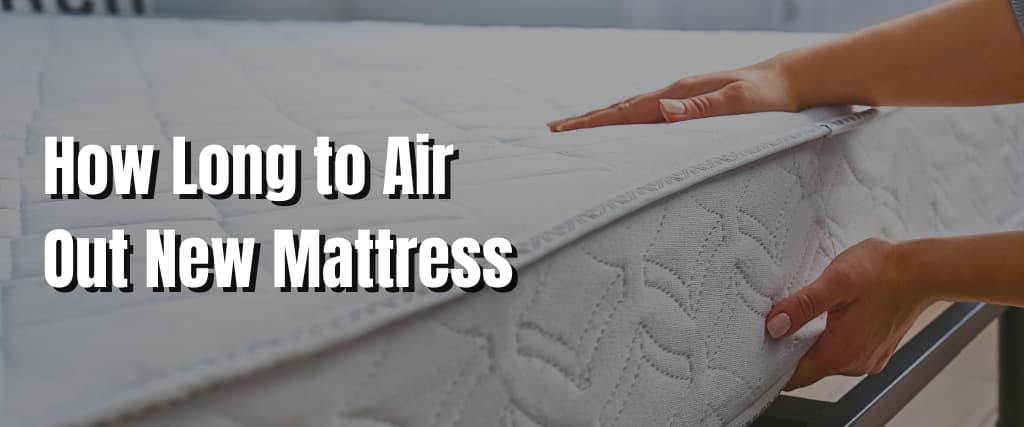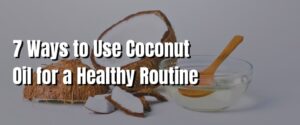People spend a quarter of their lives in bed, and could be more for those who use their beds for more than just sleeping. That said, it’s equally necessary for your health to air out new mattresses adequately because a new mattress’s smell is a nuisance and health concern.
This article explores the importance of airing new mattresses, what off-gassing is (and why it should concern you), how long one should air a mattress and some pointers on taking care of it.
Importance of Airing a New Mattress:
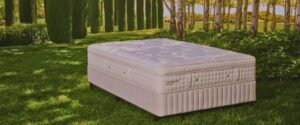
Airing a new mattress is essential because:
- It eliminates mattress off-gassing smells that remain after manufacturing
- It fully inflates vacuum-sealed mattresses
Mattress Off-Gassing: Definition
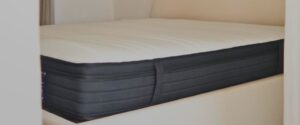
Mattress off-gassing refers to the continued expulsion of gasses from materials mattress manufacturers use to make mattresses. The chemical odours emitted from new mattresses stem from VOCs (Volatile Organic Compound).
Volatile means the elements aren’t stable and are usually broken down into simpler forms. The VOCs in the mattress are converted to gasses through the off-gassing process.
Effect VOC Off-Gassing On One’s Health
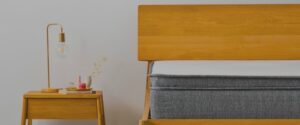
As per the United States EPA (Environmental Protection Agency), VOCs can result in several health issues such as:
- Headaches
- Respiratory issues like throat irritation
- Nausea
- Coordination challenges
- Organ damage like liver and problems
- Cancer-causing carcinogens in humans and animals
- Damage to the Central Nervous System
An individual exposed to VOCs displays the following symptoms:
Throat and Nose irritation
- Eye irritation
- Symptoms of skin allergy
- Headache
- Dizziness
- Fatigue
- Vomiting or nausea
- Breathing difficulties
- Nose bleeding
Ingredients and Materials That Expel VOC Gas

VOC gasses are examples of indoor pollution — besides mattresses, new carpets, office machines, and vehicles emit VOC gas. Household products such as paints, construction materials, and cleaning agents also expel VOC gasses.
According to EWG (Environmental Working Group), some ingredients and materials with VOCs in mattresses are solvent-based foams and glues. The majority of plant-based foams, except pure latex, emit VOC gasses. Mattresses that use gel or foam in their mattresses have more odour.
The chemicals that expel VOC gasses are:
- Added scents
- Chemical flame retardants
- Nanoparticles used as antibiotics or those used for waterproofing
- Hemp and cotton pesticides
- Commercial waterproofers
- Synthetic latex
- Polyurethane
- Vinyl – contains phthalates (reproductive toxicants)
- PVC – sourced from vinyl chloride (a carcinogen) and may have phthalates (reproductive toxicants)
- Acetaldehyde (carcinogen)
- Formaldehyde (carcinogen)
- Chlorofluorocarbons
- Benzene (carcinogen)
- Perfluorocarbons
- Naphthalene
- Toluene
- Hexane
- Nonanal
- Ethylbenzene
- 2-ethyl hexanoic acid
- DecamethylCyclopentasiloxane
Mattresses With Minimal VOC Amounts
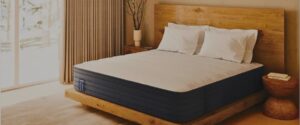
Mattresses made from 95% and above certified natural fibres like pure latex, cotton, and wool have minimal off-gassing. When manufacturers use organic fabrics, non-poisonous adhesive odours are still emitted; nevertheless, they aren’t as strong as when non-organic compounds are used, and it doesn’t endanger your health.
Although most mattress companies don’t usually reveal what materials the manufacturers use to manufacture their products, customers can learn much about a mattress by assessing a manufacturer’s claims about their product and its certifications.
No regulations are limiting the amount of VOC gasses a mattress can emit. Fortunately, some certifications that come with mattresses can help determine whether a company has a high off-gassing mattress. Your mattress emits fewer VOC gasses if it has the following certifications:
- Low-VOC certifications such as Greenguard Gold
- Global Organic Latex Standard
- GOTS (Global Organic Textile Standard) certification
- Certipur-us certification
How Concerned Should You Be About Off-Gassing A New Mattress?
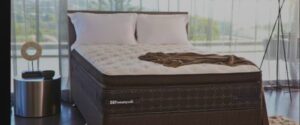
Research indicates that new mattresses emit VOC gasses during the first two months of use. The emission reaches acceptable levels after six months of use since the VOCs reduce over time, thus releasing gasses slowly. Unfortunately, the VOC gasses are usually released when sleeping since the bed is warm.
You can reduce your risk of exposure to VOC gasses by airing your mattress regularly and having good ventilation with fans and windows.
New mattresses don’t have labels detailing the chemicals used in manufacturing them. Nevertheless, the emissions will decrease if the manufacturer uses natural fibres such as pure latex, wool or cotton.
Sadly, many mattresses don’t have a return warranty; chances are, if you’ve already bought a high-VOC mattress, you’re stuck with it.
How Long Should You Air Out a New Mattress?

Depending on whether a company off-gasses mattresses before packaging and the brand, airing a new mattress can take anywhere between one day and several weeks.
You’ll know most of the emission is done when no chemical odour emanates from the mattress. That said, just because you can’t smell the off-gassing doesn’t mean the off-gassing is finished.
According to research, some mattresses can be aired for as long as six months and still emit VOC gasses. Most memory foam, gel, and foam mattresses made from non-organic materials can off-gas for as long as one year.
Standard Mattresses and Mattresses in a Box
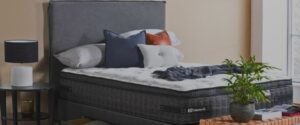
Mattresses from local retailers take a minimum of 24 hours to air before their initial use.
If you buy a mattress in a box sold by online retailers like Amazon, you’ll have to air it for 48 hours to get adequate air to expand to its ideal firmness level. The 48 hours are also essential to re-expand its memory foam pads.
Top Brands

Different mattress brands require different off-gassing times as follows:
- Casper: The VOC gasses odour typically disappears after 24 hours. All its products are CertiPUR-US certified.
- Leesa: The off-gassing smell typically lasts for several days. All Leesa products are CertiPUR-US certified.
- Purple: Airing out Purple mattresses for 24 hours will eliminate the off-gassing odour. All Purple products are CertiPUR-US certified.
- Tempur-Pedic: It takes a minimum of two weeks for Tempur-Pedic mattresses to lose the off-gassing odour; nevertheless, the duration differs depending on the model.
- Tuft & Needle: Off-gassing this brand takes several days. The Mint polyfoam and Original models are GreenGuard Gold, STANDARD 100 (by OEKO-TEX), and CertiPUR-US certified.
Child and Baby Mattresses
There are several laws globally and in Australia concerning the materials manufacturers can use to make child and baby mattresses. Sadly, there are several concerns regarding chemicals companies use to make mattresses for baby cots.
Research shows manufacturers use excess ingredients connected to cancer, like benzene, formaldehyde, and acetaldehyde, when manufacturing baby mattresses. These chemicals affect kids more because of their age and size.
Companies that make baby cot mattresses that don’t have these chemicals include:
- Natural Mat
- Land and Sky
- Organic Mattress, Inc.
- Naturepedic
- Savvy Rest
- Pure Rest
- Sleeptek
- Shepherd’s Dream
- Suite Sleep
- Soaring Heart Natural Bed Company
- White Lotus
- Vivetique
If your child’s mattress isn’t from the companies listed above, you should consider airing it out a few months before the baby’s arrival rather than putting sheets on it immediately.
You should air your child’s mattress often; when changing bed sheets, air out the mattress before you replace the bedding with a fresh set. A mattress cover made from organic material can offer an additional protection layer between your child and the mattress.
Guide to Airing Out a New Mattress

The following tips can help you air out your new mattress to get rid of VOC gasses:
- You can hasten the airing out process if the airing room has a cross breeze. You can achieve this by opening doors and windows.
- Put unwrapped mattresses in a well-ventilated room or the garage before you sleep on them. Place the mattress in a room you don’t frequently use so as not to expose your family to toxins. Don’t put the mattress in your bedroom till it loses the chemical odour.
- Sprinkle some baking soda on the mattress to soak up the odours.
- Put an air purifier in the room you use to air out the new mattress. Place the mattress in a clean, sunny area to air it out naturally. If the mattress comes with cardboard or plastic packaging, place it below the mattress to keep it clean.
You’ll know when you can no longer smell the chemical odour when most of the off-gassing is complete. If your mattress comes with a warranty and the odour doesn’t go away after several weeks, you should consider returning it for a safer mattress.
VOC Expulsion Safety and Long-Term Airing

In a recent study, mattresses that researchers aired out for six months still registered significant VOC emission levels. Nevertheless, the levels were insignificant as they were below California’s Environmental Health Hazards NSRL (No Significant Risk Level).
There are no studies done on the expiration date on low mattress VOC gas expulsion. Since VOCs continue off-gassing even after the odour dissipates, always air out your mattress often the first few months after buying it.
Long-term ideas to assist you in dissipating your mattress’s emissions include:
Air out the mattress when you wash your sheets.
- Have a dust cover or organic mattress pad to protect yourself from residual emissions. Mattress pads can prevent some of the toxins from reaching you. You might still detect the odour in the mattress pad; however, at least you can clean it frequently.
- Make indoor plants your friend. Research from NASA indicates that plants eliminate indoor pollution, such as VOC gas emissions.
- Open your bedroom windows often, especially when you air out your mattress.
Bottom Line
Airing out your mattress is as beneficial to your health as selecting a suitable mattress for your back. If your mattress is made from organic materials and is low VOC certified, you can expect to use it within 24-48 hours.
That said, some mattresses take several days or weeks to adequately off-gas. You’ll know the mattress is ready for use when it no longer has the new-mattress smell.
If the mattress still has a chemical odour after several months, it’s wise to purchase a new one that’s low VOC certified. While this may incur additional costs, your health comes first. Otherwise, air out your mattress frequently for the best results.

